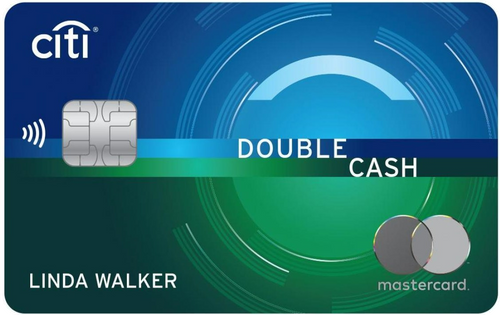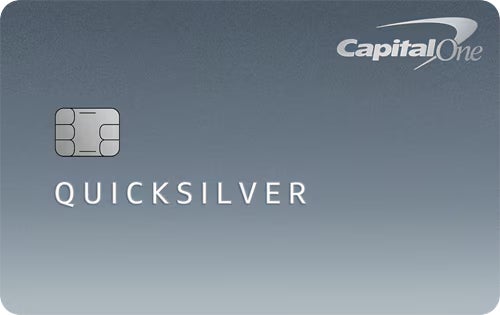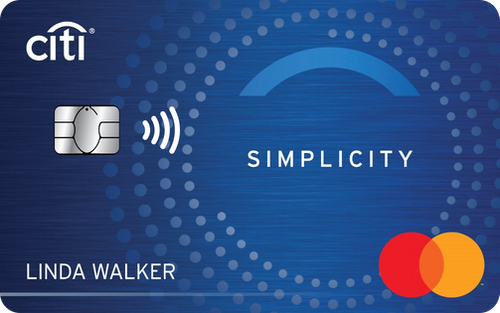| Cash Back Rating: | 2.9 / 5 |
| Rewards Value: | 1.0 |
| Annual Percentage Rate: | 5.0 |
| Rewards Flexibility: | 5.0 |
| Features: | 3.0 |
| Issuer Customer Experience: | 5.0 |
In a Nutshell:
While we are unimpressed with the new Apple Card’s cash back rewards program, it does offer some compelling features in its app that may appeal to cardholders looking for a better user experience.
Check out our Best Credit Cards
Rewards Rate
|  |
Sign-up Bonus None |  |
Annual Bonus |  |
Annual Fee |  |
APR |  |
Goldman Sachs Customer Service Ratings
|  |
Other Notable Features: No fees (including cash advance fees, foreign transaction fees, over-the-limit, late payment or returned payment fees), no penalty rate, $0 fraud protection, set up monthly, weekly or biweekly payments, interest calculator and smart payment suggestions,weekly and monthly spending reports, $0 liability, identity theft protection, ShopRunner, Mastercard Travel and Lifestyle services, Priceless Cities, Priceless Golf, onefinestay
| Find card offers for you: This card is not currently available on CreditCards.com, but you can still find a great card offer for you! Our CardMatch tool can help match you with prequalified offers and cards that align with your credit history – with no harm to your credit score. Get personalized offers from our partners in seconds. |
Apple makes a lot of bold claims about the Apple Card. The card, which is made of titanium and laser etched with no card number, “sets a new level of privacy and security,” according to the company’s promotional video. Apple, which has put its own design flourish into the card, claims the card is more “simple, transparent and private” than your usual credit card and that “unlike other credit cards, [Apple Card] helps you easily understand your spending.”
And it’s true: The card is a bit more user-friendly than the typical credit card. However, some of the functionality the company touts isn’t exactly unique (perhaps just better executed), and its underlying cash rewards program is underwhelming.
With a world of cardholders looking for the best cash back card, will a better user experience surpass the lure of earning more cash back with other cards? For rabid Apple users, it’s probably a moot point since they’re likely to snatch up any new Apple product. For the remainder of cardholders, the card’s style points may not be enough.
Pros
- The card offers a 3% cash back rate on Apple purchases and select purchases using Apple Pay (2% cash back on all other Apple Pay purchases) – which could be an excellent choice for avid Apple buyers.
- The card has no fees, such as an annual fee, late fees, or penalty APR, which reduces additional expenses for cardholders.
- The card makes it easy to redeem cash back, as your reward earnings can be redeemed at any time using the wallet app.
- Unlike other reward cards, the Apple card has a more sensible APR range.
Cons
- On purchases made outside of Apple or Apple Pay, the credit card offers a low 1% cash back rate.
- It doesn’t include any unique cardholder perks, such as travel protection or bonuses like most popular cash-back cards.
Why you might want the Apple Card
Those who frequently use Apple Pay or buy a lot of Apple products will appreciate the Apple Card’s reward structure, since the $0 annual fee card offers high reward earnings on Apple purchases and select retailers, as well as on all Apple Pay transactions. Plus, in addition to no fees and pop-up sign-up bonuses, you get the convenience of having your daily cash back earnings deposited directly into your Apple Wallet as Daily Cash, saving you time when redeeming rewards.
No-interest Apple product financing
If you’re wondering how you’ll be able to upgrade or pay for a new iPhone or other Apple device, the Apple Card could be a great way to finance your purchase.
The card allows you to buy an iPhone in 24 monthly installments without paying interest. Your monthly payments are bundled into your Apple Card minimum payment in the Wallet app, so you’ll only have one payment to make. You can also trade in your old iPhone and have your new phone’s purchase price reduced instantly at checkout, along with your monthly installment payments.
Other Apple devices are also eligible for 0% financing, including products from the Mac lineup, as well as iPads, AirPods Pro, AirPods, Apple Pencil and more. Financing options vary by product, typically ranging from six to 24 months.
Apple Card financing options
| Device | Eligible models | Installment period |
|---|---|---|
| iPhone | All | 24 months |
| Apple Watch | All | 24 months |
| iPad | All | 12 months |
| Mac | MacBook Air, MacBook Pro, iMac, iMac Pro, Mac Pro, Mac mini | 12 months |
| Apple TV, Beats Flex Wireless Earphones and AirPods | All | 6 months |
To take advantage of the Apple Card’s financing program, simply pick out your new device and select Apple Card Monthly Installments as your payment option in the Apple Store app or online at apple.com. If you’re already an Apple cardholder, there’s no additional application to fill out.
Tip: In case you had any doubt, rest assured that the Apple Card can help you build credit with responsible use. The card reports to all three of the national credit bureaus.
Easy cash back redemption
The Apple Card’s value proposition is really all about user experience, and this extends to redeeming your rewards. All the cash back that you earn is applied on a daily basis to the Apple Cash card in your Wallet app. From there, you can immediately redeem cash back for purchases in stores, on websites or in app, or as a payment to your Apple card.
You can also deposit cash back into a bank account, and you can even transfer it to a friend via Apple Messages. Since it’s all in the form of Apple Cash, you don’t have to worry about losing value on any of these redemption options – your cash back is always worth 1 cent.
Most remarkable is the fact that Apple allows you to redeem any amount of cash back (starting at $1) as soon as you earn it. Most issuers require you to wait until the end of the billing cycle to start using your rewards – not the Apple Card.
Occasional Sign-up bonuses
So far, Apple Card sign-up bonuses have been rare, but they do pop up from time to time, so it’s worth keeping an eye out if you’re considering applying. In 2021, the card offered $75 back on Apple Pay purchases at Nike.com, in Nike apps, or at Nike stores when you spent $75 or more in your first 30 days.
That said, the Apple Card’s occasional sign-up bonuses are rarely large enough to sway your decision to apply one way or the other.
Decent interest rate
The card also offers a more reasonable APR range than usual. Cardholders with excellent credit scores may be offered an exceptionally low rate of 11.24%. For cardholders with lower credit scores, the APR can climb up to 22.24%. This is high – but standard for a cash back rewards program.
If you suspect you’ll need to carry a balance long-term, you may want to choose a different card, as Apple Card balance transfers are especially troublesome, and, according to some user reports, may be impossible. The card’s issuer may consider a payment made as part of a balance transfer a “non-conforming payment,” so you could end up in a bind if you find yourself wanting to move your Apple Card balance to a card with a 0% intro APR on balance transfer offers.
No fees – at all
One of the Apple card’s most notable features is that it doesn’t charge any of kind of fees – including annual, foreign transaction, late payment, over-the-limit or returned-payment fees. While there are many cards that waive certain fees – such as annual or foreign transaction fees – and even a few cards, such as the Citi Simplicity® Card, that waive the fee for late payments, it’s rare for a credit card to charge no fees at all. You don’t have to worry about surprise fees appearing on your statement, which is a major plus for transparency.
Apply without putting your credit score at risk
The Apple Card’s unique approvals process is great news for cardholders concerned about their credit scores and approval odds. You can send in an application and find out whether you qualify for the card (and what your APR and Apple Card credit limit will be) with only a soft pull to your credit. Once you accept the offer and open the card, Apple will perform the official hard pull to your credit report. While it’s not quite a “soft pull” credit card, this flexibility makes applying much less risky for applicants on the lower end of the credit spectrum.
Sleek interface and (some) unique functionality
Aside from the cash back program and lack of fees, most of the ballyhoo around the Apple Card focuses on the design of its app. The interface does look pretty sleek. And while some of the functionality is not exactly unique, the card boasts a handful of compelling features, including:
- Weekly and monthly summary reports – While spending reports are a common feature on credit cards, they’re not usually broken down by week and month, and Apple puts the report in an especially pleasing bar graph form, segmented by day. Apple’s color-coded spending summary also helps you spot trends in your card use.
- Interest calculator with payment suggestions – The Apple Card features a payment calculator that automatically adjusts to show you the interest you will owe on your selected amount, as well as suggestions on paying your bill. This mostly serves as a slightly easier way of inputting payments, but the interest calculator could be helpful for less savvy cardholders who may be unaware how quickly interest adds up.
- Payment scheduling – You can set up weekly and biweekly payments to match your paychecks. While most issuers allow you to configure payment deadlines, it is a nice touch of consumer-friendliness that Apple automatically schedules them for the month’s end. Also, while most credit cards come with a scheduling feature, they don’t always allow you to schedule multiple payments per month.
- Family sharing – With Apple Card Family, you can share your card account with up to five other people who are 13 years or older and members of the same Apple Family Sharing group. Apple’s method of allowing authorized users, Apple Card Family lets you add a co-owner with whom you’ll build credit as equals. You can also add adults, kids, and young adults as participants, who are not responsible for payments but have the option of building credit with you. All users earn Daily Cash on their purchases, which is credited either to their own Apple Cash card or, if they don’t have an Apple Cash card, to the primary owner’s statement balance.
- Security and privacy – The physical version of the Apple Card doesn’t have a credit card number – providing you a little extra security in case your card is stolen. The card also includes other Apple Pay security features, such as Face ID, Touch ID and unique transaction codes, making it a little more robust than your average credit card. And while the card’s issuer, Goldman Sachs, can view your data, Apple promises that it will never share or sell your data. Since it’s common practice for card issuers to sell their customers’ data to third parties, fans of privacy and information security may find this pledge appealing.
Why you might want a different card
The 2% cash back on most purchases is comparable to some of the best cash back cards available, but Apple Pay must be used to earn the elevated 2% rate. The physical card gives just 1% back on spending, which is low when compared to the industry standard of at least 1.5% cash back.
The card just won’t be beneficial for those who do not use Apple products, because the high rewards rates apply solely to purchases of Apple products and transactions made using Apple Pay. Those who don’t use iPhone’s mobile wallet or who don’t buy all their tech from Apple can find cash back credit cards with much better rewards programs to enhance their everyday spending.
Lacks unique benefits
The Apple card is extremely light on additional perks and is distinctly lacking the travel and purchase protections (e.g., extended warranties) that come with most credit cards. Cardholders are entitled to free ShopRunner service and a few perks through Mastercard Priceless Cities, but that’s about it.
Limited cash back earning potential
One of the biggest drawbacks of the Apple Card is that its cash back program is not that rewarding. Cardholders receive bonus cash on Apple purchases: 3% cash back on everything you pay from Apple – including Apple Store, apple.com, App Store and iTunes purchases – and 2% cash back on Apple Pay purchases. Also, you can earn 3% cash back for Apple Pay purchases made at merchants like Panera Bread, Exxon Mobil, Nike, Uber, Uber Eats and Walgreens and at T-Mobile stores (not online). All the rest of your purchases earn only 1% cash back.
Of course, Apple users are avid about purchasing Apple products, which can add up to a significant amount of spend each year. However, when we consider how much an average Apple enthusiast might spend on Apple products per year (around $726 for households with an income between $50,000 and $75,000 according to a 2015 study from Slice Intelligence), this still constitutes only a small portion of overall spend. By our estimates, the overall rate at which the average cardholder can earn cash back with the card (around 1.19% per dollar spent) is really low compared with other top cash back cards.
In comparison to cards such as the Chase Freedom Unlimited card®, which offers at least 1.5% cash back on purchases, or the Citi Double Cash® Card, which offers up to 2% cash back – 1% when you make a purchase and 1% when paying off that purchase – a rate of 1.19% cash back is paltry. If you are looking for a go-to cash back card, there are much better options.
The Apple Card does have the edge over other cards on Apple and Uber purchases. If you want to earn the most cash back possible, it may make sense to load the card into your iPhone and use it exclusively for Apple, Apple Pay and Uber. But keep in mind that unless you buy an exceptional number of Apple products each year or use Apple Pay heavily this is not going to add up to a ton of cash back.
Tip: Since the card offers 2% cash back on Apple Pay purchases, you could potentially earn 2% cash back on every purchase if you manage to use Apple Pay everywhere you shop. Apple Pay has yet to be adopted by all merchants (and many who accept it don’t know how to process the transactions), and we estimate that most users — even Apple users — use Apple Pay for a small percentage of their purchases. However, the card does have the possibility to function as a 2% cash back card, especially as Apple Pay becomes more broadly adopted.
How does the Apple Card compare to other rewards cards?
If you love Apple products, you may already be committed to signing up for the new Apple Card, but applicants should be aware that there are better options for earning cash back (or even pairing with your Apple Card to use on other purchases).
 Citi Double Cash® Card | ||
Rewards rate
| Rewards rate
| Rewards rate
|
| Sign-up bonus | Sign-up bonus | Sign-up bonus
|
Annual fee
| Annual fee
| Annual fee
|
Other things to know
| Other things to know
| Other things to know
|
Apple Card vs. Citi Double Cash
If you’re a fan of cash back rewards, the Citi Double Cash Card is one of your best bets. It offers up to 2% cash back on every purchase – 1% when you make the purchase and another 1% when you pay off the purchase by the due date. Few other cards offer as high a flat cash back rate..
Apple Card vs. Capital One Quicksilver
While the Capital One Quicksilver card doesn’t offer as high of a cash back rate as the Citi Double Cash, it’s a great option for cardholders who want a simple cash back card that earns a consistently high rate of cash back. You earn the same 1.5% cash back on every purchase – so you don’t need to worry about tracking bonus categories. If you prefer to use a single card for every purchase, you can earn an overall higher rate of cash back with the Quicksilver card than you can with the Apple Card.
Like the Apple Card, the Quicksilver card is very flexible on redeeming cash back – you can redeem any amount for statement credits, checks, gift cards and more. Also, you can earn an extra $200 if you sign up for the card and spend $500 in the first three months.
Apple Card vs. Citi Simplicity Card
For cardholders who love the idea of not paying a late fee, the Citi Simplicity Card is worth a look. Unlike the Apple Card, it doesn’t offer any sort of rewards program. But it is a good barebones option for newbie cardholders who might be prone to missing payment deadlines. The card doesn’t charge any late fees or penalty rate, and even charges a lower-than-usual interest rate on cash advances. Also, it comes with a 21-month-long, 0% intro offer for balance transfers and a 12-month 0% intro offer for purchases, then 18.24% - 28.99% (Variable).
See related: The best credit cards for Apple purchases
How to use the Apple Card
- If you want to maximize your cash back, stick to using the Apple Card for Apple purchases and Apple Pay, and rotate in other credit cards for the remainder of your spending.
- Take advantage of Apple’s payment scheduling option to keep your payments timely.
- Use Apple’s biweekly payments option to pay down your balance more than once per month – this will keep your credit utilization low and can boost your credit score.
- If you use the card for all your purchases, be sure to take advantage of Apple’s reporting features to track your spending patterns – you may discover places where you can cut back.
- Though the card doesn’t charge a fee for late payments, you should still avoid missing your due date since it could cost you a hefty amount of interest and could potentially land on your credit report.
Is the Apple Card right for you?
While we’re not impressed by the Apple Card’s cash rewards program, we do think the Apple Card includes some very useful features within its app that should make using it easier than usual. Though our research indicates that cash back rewards are the biggest priority for many cardholders, there are plenty of people that care about user experience as well, not to mention a slew of devoted Apple users who may need to take advantage of the card’s financing options on Apple products. For these types of users, the card may be well worth it.
*All information about the Citi Double Cash® Card has been collected independently by CreditCards.com and has not been reviewed by the issuer.
All reviews are prepared by CreditCards.com staff. Opinions expressed therein are solely those of the reviewer and have not been reviewed or approved by any advertiser. The information, including card rates and fees, presented in the review is accurate as of the date of the review. Check the data at the top of this page and the bank’s website for the most current information.
Responses to comments in the discussion section below are not provided, reviewed, approved, endorsed or commissioned by our financial partners. It is not our partner’s responsibility to ensure all posts or questions are answered.


